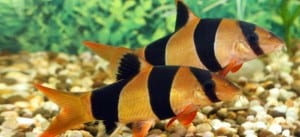
Common name: Clown Loach, tiger botia
Scientific name: Chromobotia Macracanthu, Botia macracantha, Cobitis macracanthus, Chromobotia macracanthus
Average Adult Fish Size: 6″ (15cm) up to 12″ (30cm)
Place of Origin: Indonesia on the islands of Sumatra and Borneo
Typical Tank setup: Clown Loaches come from rivers and streams; they are used to having other fish and plants in their environment. Not having plants or other fish can cause clown loaches to become stressed and to go into hiding (not what you want.) Another important thing to remember is that since they do come from a fast moving river and streams, they need a tank with lots of clear, well filtered and fast moving water which can be achieved with proper filtration and the use of power heads. Stream rocks, bogwood & caves will give an aquarium adequate environment for shade and cover.
Recommended Minimum Aquarium Capacity: 44 gallon / 200 litre for one, 130 gallon / 600 litre or larger for a group.
Compatibility: When kept in groups smaller than five, clown loaches may spend lots of time hiding under obstacles in the water. Tiger barbs and Rainbows associate happily with clown loaches, and the three species may school together. However I have found them to be compatible with and tropical fish due the being assertive and never being bullied.
Temperature: 25 – 30 Deg C / 78 – 87 Deg F
Water chemistry: pH 6.5 to 7.0
Feeding: A good variety of food should be provided for clown loaches, and their behaviour should be monitored when feeding. In a community tank other fish may take the food before it reaches the bottom, where the clown loaches tend to feed. Clown Loaches are very noisy surface feeders who will assert themselves to take the most and the best of bloodworm and other frozen food. Most Clown Loaches accept standard flake food and sinking pellets as their dietary requirements, but thrive with a variety of food: live (worms, brine shrimp, small snails), banana, cucumber other plant matter, frozen brine shrimp and Bloodworms.
Sexing: It is believed that this species of fish is NOT sexually dimorphic (has no detectable sexual difference).
Breeding: Unknown
Additional Information: Clown loaches make a very distinctive clicking noise when they are excited or during feeding. This sound is produced by the grinding of their pharyngeal teeth. Sometimes clown loaches swim on their sides, or upside down, and appear ill, or lie on their sides on the bottom of the tank and appear to be dead. This is normal behaviour so be aware of it to avoid removing healthy fish from the aquarium.
An interesting fact about clown loaches is that they carry switchblades. If you ever catch a clown loach in a net or pick it up with your bare hands, you may get cut. They have two tiny switchblades behind their eyes that they use for fighting, digging and burrowing through the substrate. So remember don’t pick them up with your hands or net them.
There are a couple of drawbacks. One is that clown loaches are extremely susceptible to disease – especially White Spot. Put a little bit of Protozin in your aquarium when you bring them home and when you do water changes. Another possible drawback (However I don’t see it as one) is that snails don’t have a chance with even a single clown loach in the tank. And since clown loaches are best purchased in groups, your snail collection doesn’t have a chance. Clown loaches love snacking on snails.
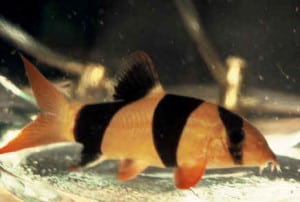
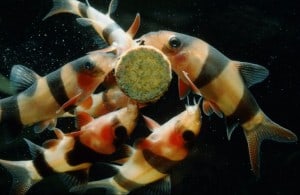
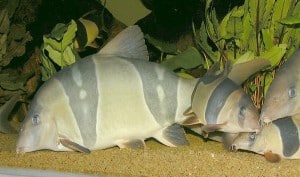

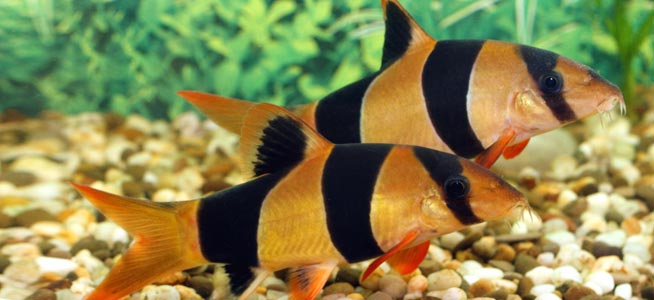
Related Posts
Croaking Gourami – Trichopsis vittatus
Benthochromis Tricoti
Large-eyed Mouthbrooder – Callochromis Macrops